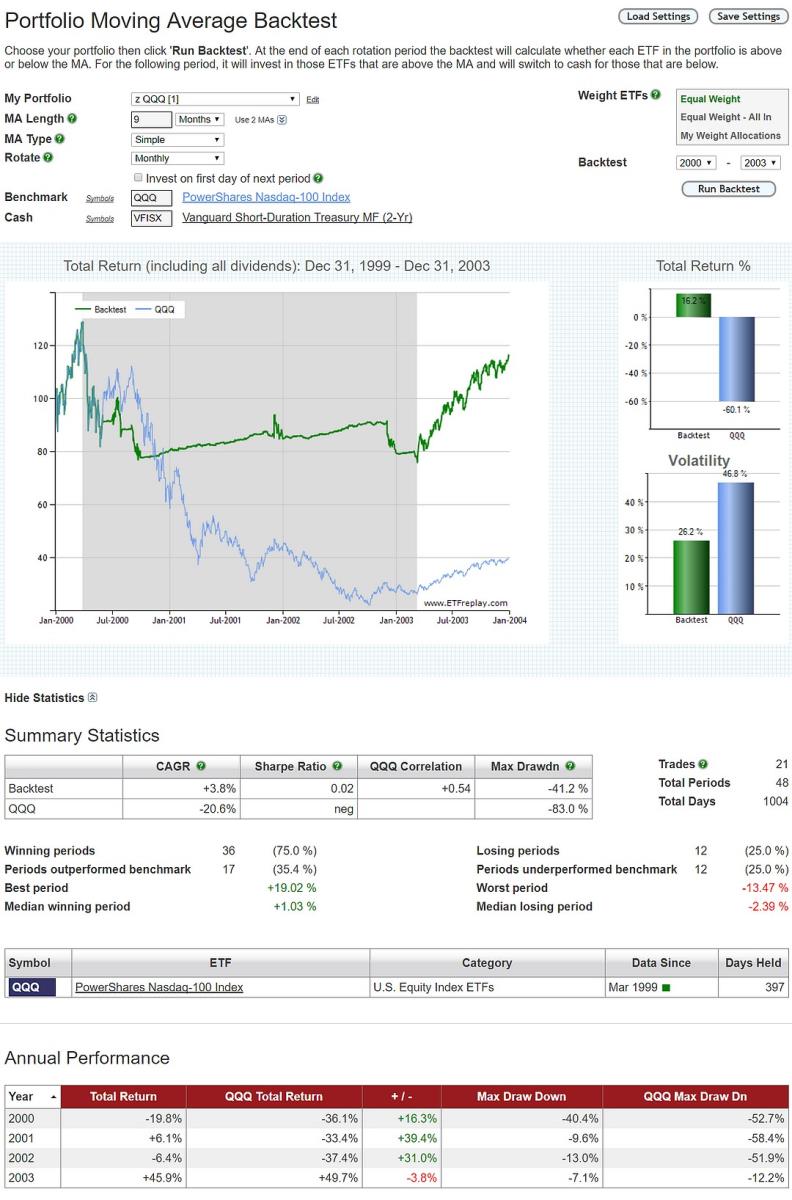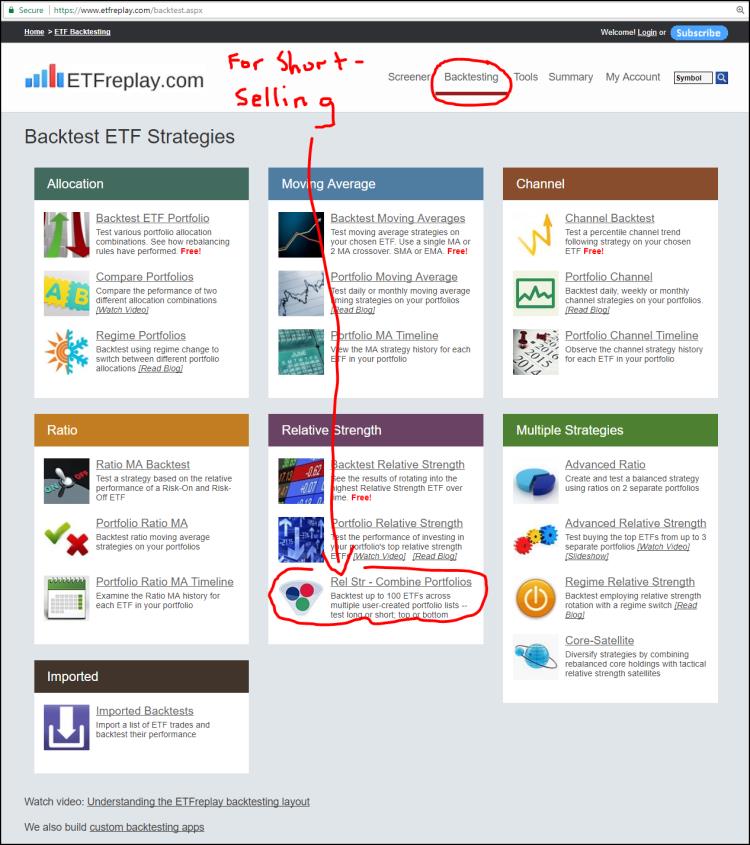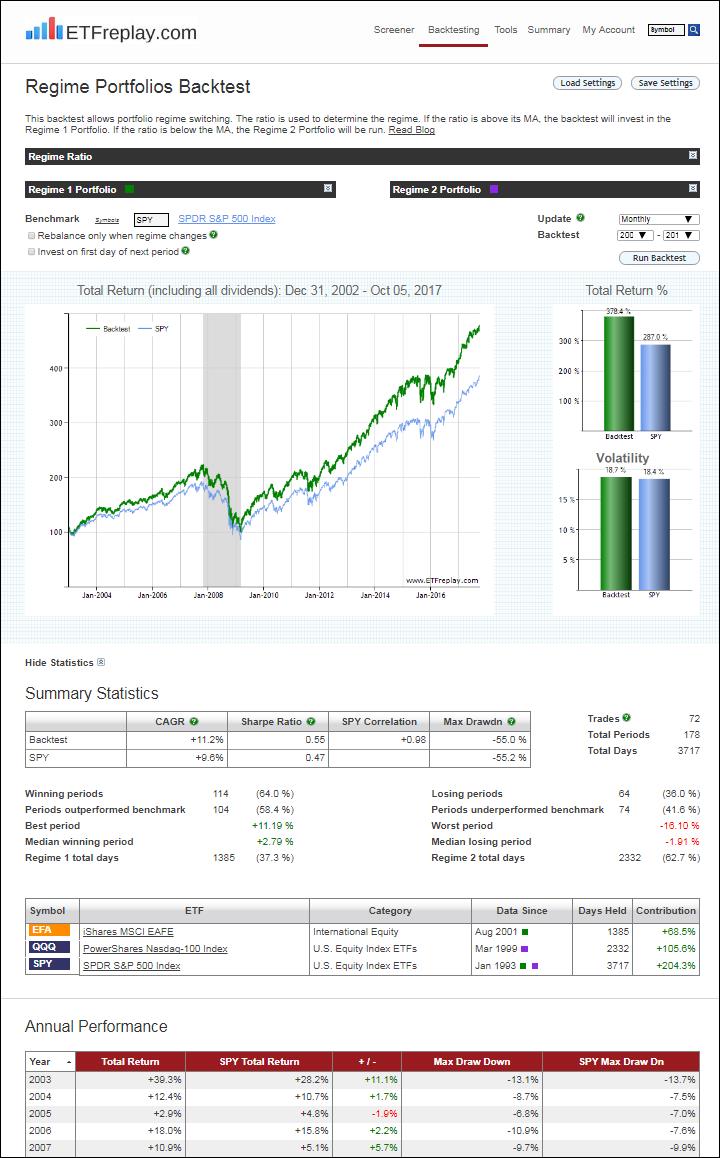Jan 07, 2018
in Drawdown
Study many different sub-periods for many different markets. It helps you understand scenarios, it helps you understand strengths and weaknesses of various techniques in backtesting.
Learn how to put the odds in your favor. If you study many different time periods across many types of markets, you will gain understanding of a strategy that is fragile vs a strategy that is more durable. You will have ideas that cannot be supported and you realize their weaknesses. Running bad backtests and learning from that is part of the process.
Below is one look at the 2000-2003 bear market. We suggest you look at that time period and many other time periods using many different types of funds. QQQ's downturn was especially bad due to the extended run-up in the prior years (QQQ index existed in prior years but the ETF product QQQ of course did not exist prior to the middle of 1999).

**A pro subscription allows you to backtest to 12/31/99 using daily total return data.
Dec 05, 2017
in Relative Strength, Video
A short video using the Advanced RS Pro backtest to look at how mixing strategies together performed during the 2000-2002 and 2008 bear markets..
to expand, click the '4 expanding arrows' icon in the bottom right corner of the video screen
Dec 04, 2017
We have just introduced a new subscription package for investing professionals.
Based on feedback and requests the we've received from advisors and portfolio managers, the new pro subscription adds the following functionality to the regular subscription.:
- All Moving Average, Channel, Ratio and Relative Strength portfolio strategies can be backtested from Dec 31, 1999
- Buy Top limit on all Relative Strength backtests raised to 20
- Number of favorite backtest settings to Save / Load increased to 20 per backtest
- Number of Dashboards increased to 20
- Advanced Relative Strength Pro backtest: test investing the strongest ETFs from up to 4 separate portfolios
- Core-Regime Relative Strength & Core-Regime Portfolios backtests
- Annual fee deduction option on Core-Satellite, Core-Regime RS and Adv RS Pro backtests
- MA Filter on Core-Satellite & Adv RS Pro can be Daily or Monthly MA
Subscribers that would like to upgrade to this new package can do so by going to My Account > Subscription Settings > Upgrade to Pro
Nov 02, 2017
in Backtest
If you would like to test Short-Selling on ETFreplay, use the versatile app called Rel Str - Combine Portfolios.
You can test going short the top or bottom ranking securities in a list.

Oct 06, 2017
in Regime Change
This backtest defines a Regime by comparing the performance of EFA and QQQ, two standard ETFs with plenty of market cap. The backtest then decides to allocate to EFA or QQQ depending on which Regime is in place. SPY is held in either case as a core position:
